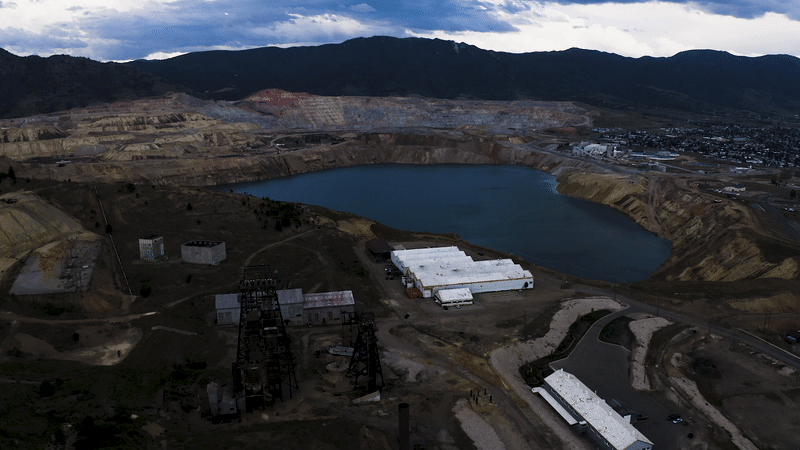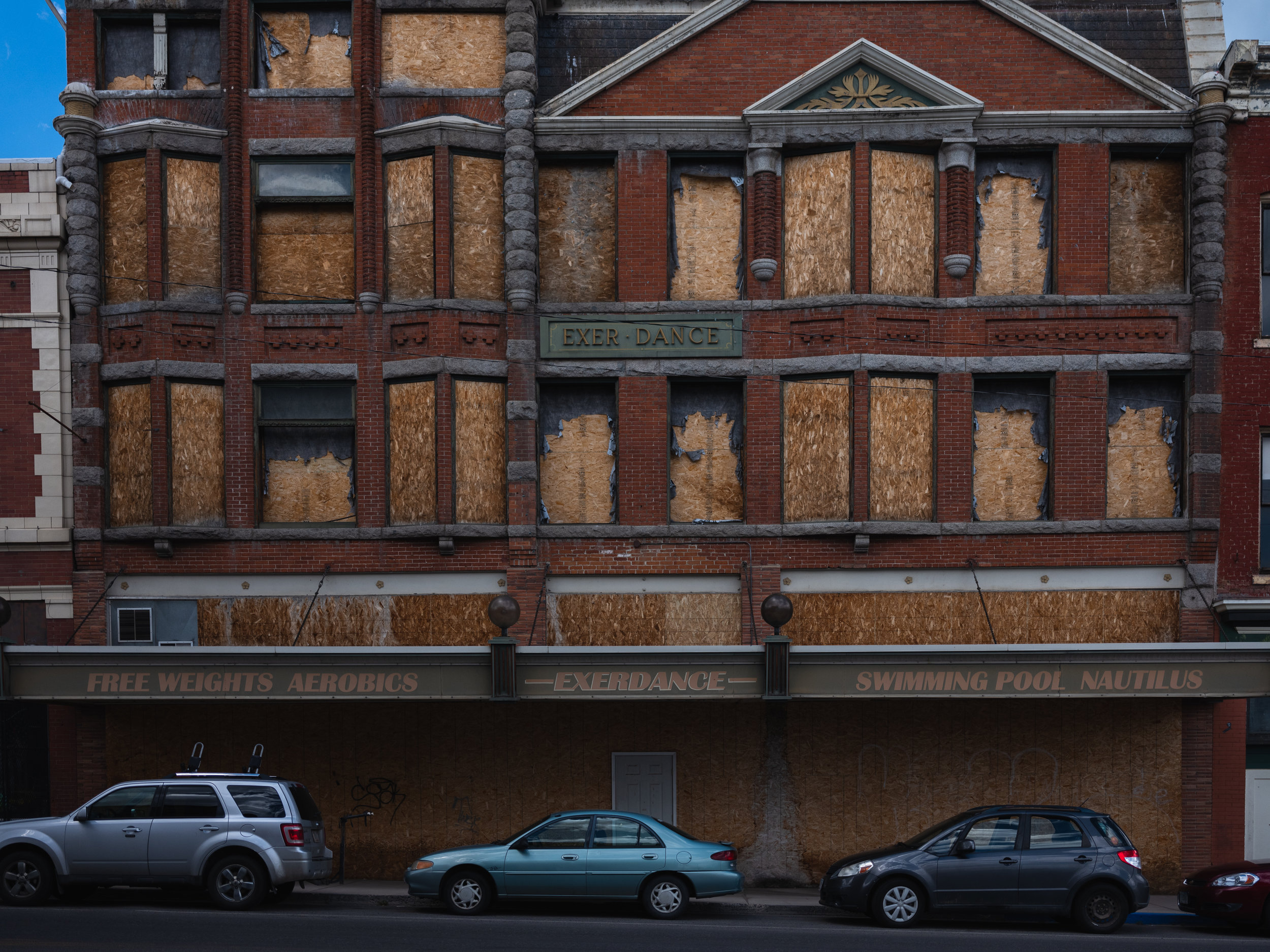Boom, Bust and the Berkeley Pit
Butte, Montana’s claim to fame is host to one of America’s largest Superfund sites (Superfund is a U.S. program designed to fund the cleanup of sites contaminated with hazardous substances and pollutants). The heart of it all is the Berkeley Pit, the large eyesore that monopolizes the north end of town. The Berkeley Pit opened for business in 1955 and closed in 1982, when increasing costs and low copper prices resulted in a full shutdown leading groundwater to seep up through the mine tunnels and the giant pit, creating an environmental catastrophe. In 2016, an estimated 3,000 to 4,000 snow geese perished in the Berkeley Pit’s toxic water of both heavy metals and sulfuric acid.
For decades the city of Butte was wealthier than anywhere on the planet, however those days are long gone, now everywhere you look are wide, empty streets and run-down houses and buildings. Butte now feels eerily familiar to today’s Iron range where the economy has become a far cry from its prosperous past. The Berkeley pit operated for 27 years and Butte is now left with indefinite water pollution, an economy struggling to diversify and no solution for either.
After filming for the weekend it was easy to see how northeastern Minnesota and Butte are connected by the boom and bust of the extraction industry. We couldn’t help but question, if sulfide-ore copper mining is introduced to Minnesota how long will it take for the region to become the Butte, Montana of Minnesota?





















